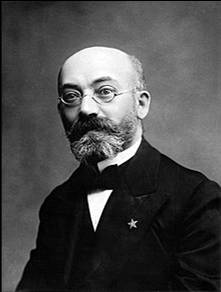The history of the country is interesting and symbolic. Once the largest state in Europe during the Polish-Lithuanian Commonwealth, whose tolerance attracted significant immigration from closer and further afield, it then ceased to exist on the maps of Europe for a total of 123 years. Today it is a fascinating country well worth a longer visit.
Located in Central Europe, Poland is the sixth most populous member state of the European Union, with a clearly migratory, multicultural and multilingual background since the 16th century. Due to its geopolitical location the country connects the East with the West of Europe in cultural, political and economic dimension. Due to numerous military conflicts unleashed in the last years all over the world Poland is continuously being confronted with complex problems arising from its residents’ migratory background.
Almost completely destroyed during World War II, the metropolis lifted itself from the ashes and is now a vibrant European city with rich history and a lot to offer to visitors.
Warsaw, the capital of Poland located at the heartland of the amazing Mazovia Province with a population estimated at nearly 2 million residents, is one of the most dynamic metropolises in Europe. Once known as the Paris of the East, Warsaw is a city of astonishing contrasts, with its historical roots deeply embedded in multiculturalism and multilingualism. Split by the Vistula River, Warsaw has two sides with differing atmosphere and attractions. Warsaw’s downtown, located on the north side of the Vistula River running through the city, is the center of business, art, entertainment, shopping areas, fine restaurants, museums, theatres, cinemas, galleries, skyscrapers, bars and hotels. Being a center of research and development, Warsaw’s downtown makes a perfect location for international scientific and economic events, conferences and conventions of various sizes. The glamorous northside riverbank is bustling with energy and activity, whereas the Bohemian Praga districts on the south bank offer numerous attractions off the beaten track, alluring tourists to taste their unique atmosphere, to admire their innovative street art and to visit alternative theatres.
Warsaw is the largest and the most renowned university city in Poland. The University of Warsaw is an institution with 200 years of tradition, 30 academic and research units, 21 faculties as well as 1600 research projects financed by national and international research programmes. The historical Main Campus of the University of Warsaw, founded in 1816, is located north of the Vistula River in a close proximity to the city center, around 40-50 minutes from the major international airport and 10-15 minutes from the international railway station. There is a regular bus line running daily between the airport and the venue. It is well connected to the downtown (bus, subway) with average commute time from ten to fifteen minutes. Most hotels considered for this conference are situated either in the vicinity of the venue or in the downtown. The enchanting Krakowskie Przedmieście Royal Avenue, surrounded by prestigious manor-houses, palaces and notable institutions, runs to the north of the campus and links it with the Polish Academy of Sciences, the Presidential Palace and the Warsaw Old Town. Being a noble mixture of historical charm and modernity, the Royal Avenue is an attractive nightlife scene for tourists, residents and students.
Warsaw offers a wide range of tourist attractions. The picturesque Old Town with the Royal Castle, the Sigismund’s Column and many beautiful squares, reconstructed after World War II, was designated a UNESCO World Heritage Site. Delightful teahouses and cafes with cozy atmosphere make an ideal place to relax during discovering the oldest part of the city. Having survived Poland’s partitions, the Wilanów Palace reminds of the country’s turbulent history. One of Poland’s most important monuments hosts interesting events and concerts such as Summer Royal Concerts in the Rose Garden. In the astonishing Łazienki Park (Royal Baths Park) visitors can listen to free Chopin concerts every Sunday during the summer. The historic park offers plenty of green space to relax and jogging paths. An interesting way to experience Warsaw is to explore a few of the interactive museums, including the Warsaw Uprising Museum, the Museum of the History of Polish Jews and the Copernicus Science Centre, the largest science center in Poland, standing on the bank of the Vistula River. Warsaw is the seat of the National Museum, the Warsaw National Philharmonic Orchestra and the Great Theatre-National Opera, the largest in the world. All the sites mentioned above are quite well connected to each other (bus). The charm of Warsaw lies in its energetic inner life. Exploring Poland’s capital includes visiting the vibrant Vistula boulevards with a restaurant on a barge, enjoying sunshine on a tropical beach on the Vistula River, tasting finest chocolate in E. Wedel Chocolate Lounge, the historic location of the famous Wedel chocolatier, or… visiting the skiing station in the middle of the city (Górka Szczęśliwicka). Being a city full of surprises, Warsaw is worth a look beyond the surface. Exploring definitely pays off.
Warsaw Virtual Sightseeing
Discover Warsaw online. Virtual tours of museums,cities and places of natural beauty have been around for a while now,often being little more than an additional novelty to the overall visitor experience (nothing beats visiting in person), however, intimes of nation-wide museum closures and mass self-isolation, these have become the only option to view some of the best sights thatWarsaw has to offer.We've done all the work for you and compiled a list of some top places you can begin within the next few minutes. Open the online map and explore Warsaw.
The University
 Poland is in the heart of Europe.
Poland is in the heart of Europe.
 Poland is home to Esperanto, a constructed auxiliary language, created in the late 19th century by Ludwig Lazarus Zamenhof, in Białystok.
Poland is home to Esperanto, a constructed auxiliary language, created in the late 19th century by Ludwig Lazarus Zamenhof, in Białystok. Warsaw is in the heart of Poland.
Warsaw is in the heart of Poland.